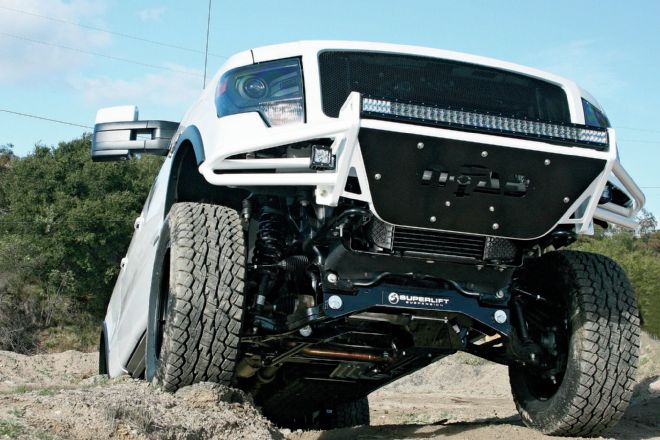
Superlift’s current-generation F-150 6-inch suspension system was reportedly the first aftermarket lift kit certified to comply with the FVMSS 126 traction-control stipulation (see sidebar). The company recently updated the kit to fit ’14 F-150s, which have different control arms and front strut mounts from ’09-’13 models.
Replacing the factory knuckles is common with most IFS kits. Increasing the truck’s track width creates more clearance for knuckles, calipers, wheels, and tie-rods. However, the wider the track, the greater the leverage and stress on the CVs and bearings. Handling and turning radius are also compromised.
So the engineering challenge here is to design a knuckle that spreads the ball joints 6 inches farther apart while keeping alignment within factory spec and also clearing popular wheel fitments—ideally without having to add thick track-increasing spacers between the CV shafts and front diff.
Superlift accomplished this by starting with Ford’s chassis CAD files. The replacement knuckles are computer-designed in SolidWorks, then the CAD files program the in-house laser-cutter. The resulting steel plates are welded into prototype knuckles, which are tested on the vehicle. Once the design is finalized, the CAD files go to the foundry, where the knuckles are cast out of ductile iron. Superlift recently brought its knuckle manufacturing back to the USA; all machining and bracketry are done by Superlift’s manufacturing division in Louisiana.
Short story long: Superlift’s current-generation F-150 kit maintains factory track width. The caveat: minimum 20-inch-diameter wheels must be used.
This kit is designed to be installer-friendly. A two-post lift is handy to have, but a couple true 4-wheelers could knock it out with the truck supported on jackstands. Installation is simplified with such details as the sway bar relocators integrated into the crossmember and the rear bumpstop contact points incorporated into the leveling blocks. Also, the OE control arms and struts are retained, maintaining factorylike ride quality and keeping kit costs down. (F-150 owners who want to go top-shelf can swap in replacement coilovers from Bilstein, Fox, or others.)
Veteran installers Tim Porco and Jimmy Claytor of T&R Performance in Simi Valley, California, handled the job in a few hours. The only specialized tools required are a tie-rod end puller and a right-angle drill. Major steps are documented here.
The Superlift 6-inch kit made no-rub clearance for Falken 35x12.50R18 WildPeak A/Ts on 18x9 Fuel matte black Anza wheels. Superlift’s recommended maximum fitment is 35x12.50R20s on a 20x9 wheel having 41⁄2 to 51⁄2 inches of backspacing.
Post-lift details include having the truck professionally aligned and also aiming the headlights downward. Also, T&R recalibrated the speed signals for the larger tires (to restore correct speedometer and ABS/traction control signals) with a Hypertech Speedometer Recalibrator. The end result was a truck that’s still a comfortable daily driver. However, the Falkens/Fuels improve weekend desert capability, thanks to improved traction and the increased ground clearance.
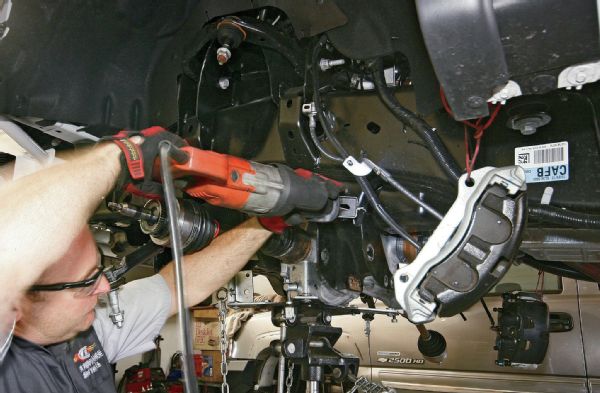
The job begins with gutting the front suspension. As with most modern 4x4 IFS lift kits, the differential is lowered to restore axleshaft and driveshaft angles. This requires cutting the lower control arm mounts following the measurements outlined in the kit’s instructions.
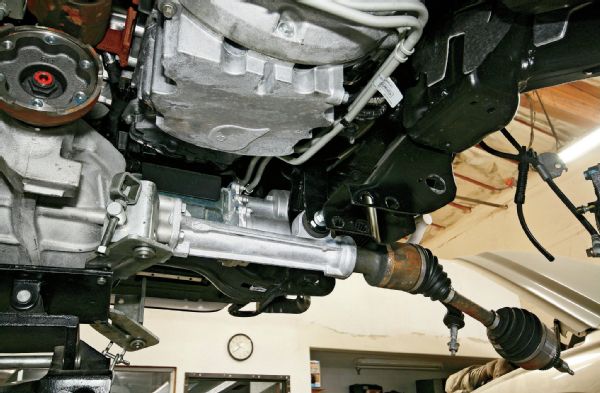
After the cut areas were painted to deter rust, the kit’s drop brackets are loosely attached to connect the axle to the frame. T&R Performance leaves the axle assembly in the truck, supported on a transmission jack.
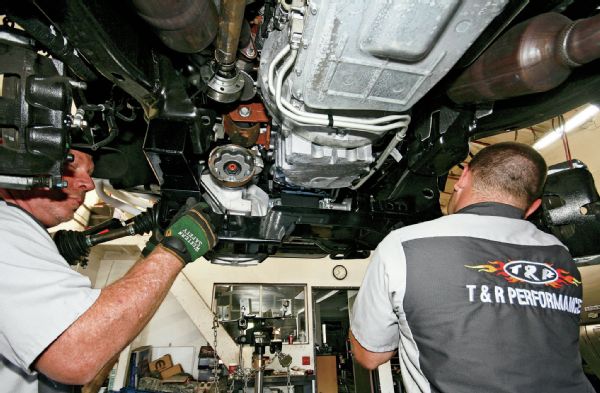
The new rear crossmember is installed next. It has “wings” that relocate the factory sway bar, saving installation time by eliminating separate brackets.
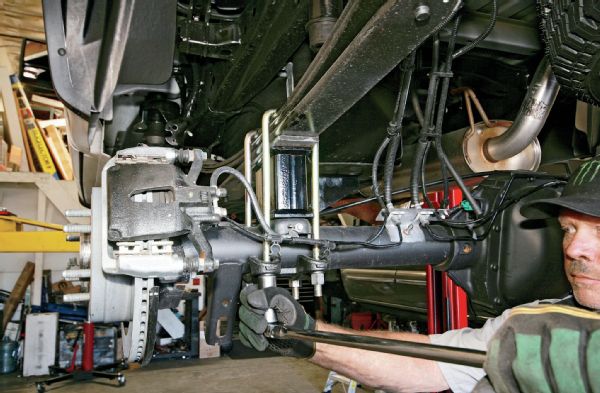
Next up is the front crossmember. It is contoured to mimic the OE member’s lines on top and for maximum ground clearance on the bottom.

The factory lower control arms are hung. Next on is a skidplate that ties the crossmembers together. The kit also includes a billet aluminum spacer, which allows the OE front driveshaft to be kept.
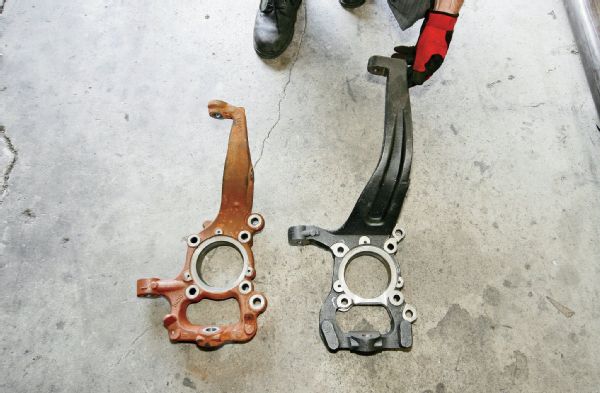
The factory sway bar and bushings now mount to the wings on the Superlift rear crossmember. The instructions recommend marking the factory orientation of the sway bar and struts prior to disassembly.
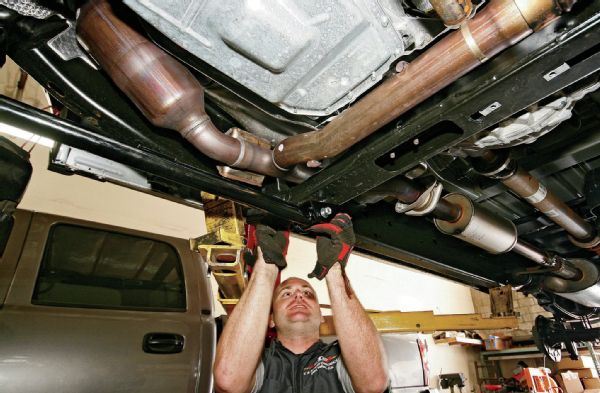
Kicker braces add rigidity between the Superlift rear crossmember and the OE transmission crossmember. The kicker arms are assembled with the kit’s poly bushings and steel sleeves to allow some deflection.
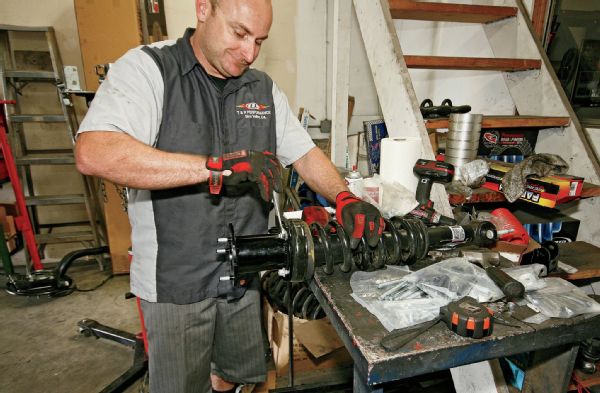
Spacer “hats” allow the factory front struts to be kept. They bolt to the existing studs—no strut compressor tool required. Then the struts are reinstalled on the truck.

Front lift comes from increasing the distance between the ball joints. Like the OE knuckle (left), the Superlift one is cast from ductile iron. The replacement knuckle is made in the USA.
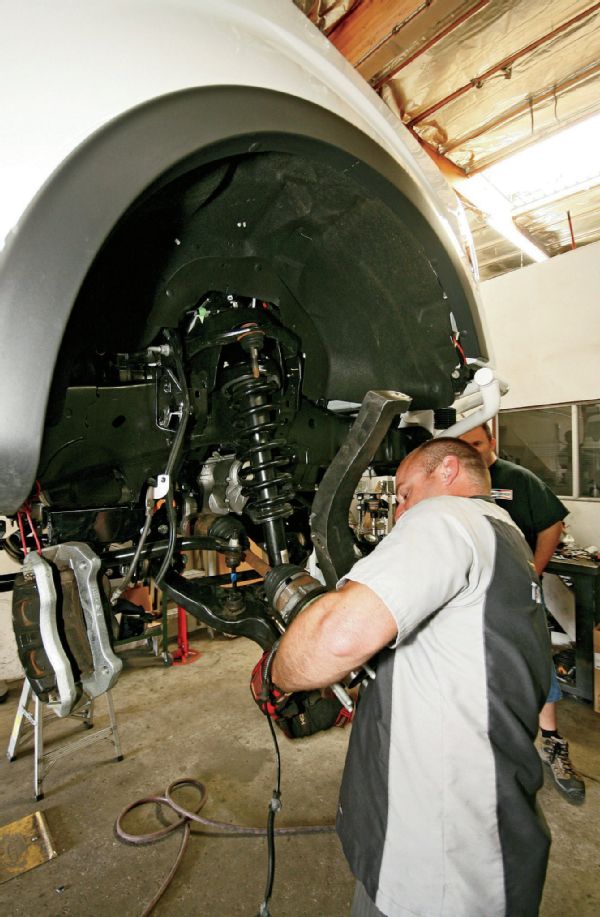
The stock bearing/backing plate assemblies are transferred to the Superlift knuckles. A second person is helpful for lifting the new knuckle assemblies onto the A-arms.
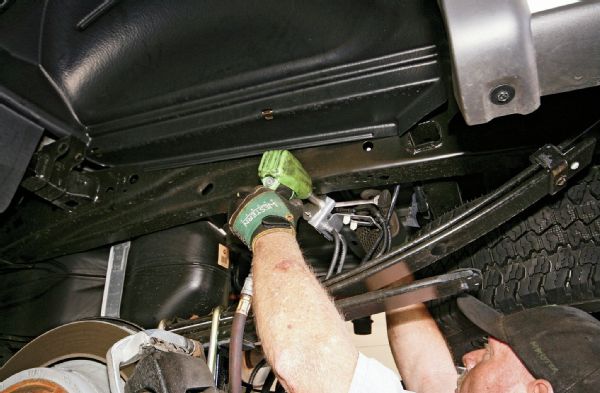
The job’s one quirk is with the emergency brake relocation bracket. The bracket is used as a template for drilling a hole in the frame, requiring a right-angle drill.

The rear is leveled with 4-inch-tall fabricated blocks. Their inboard sides incorporate plates that work with the factory bumpstops to limit spring overcompression.
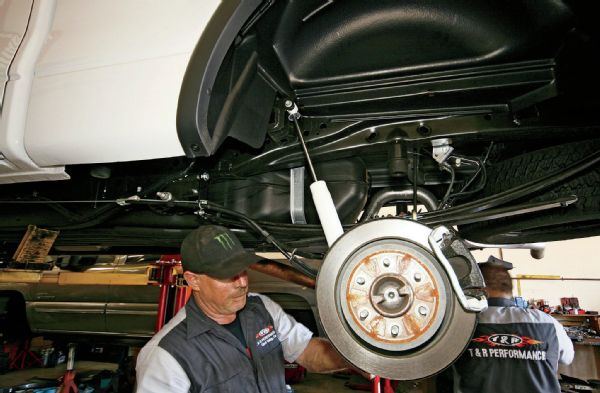
The kit includes longer-than-stock Superide twin-tube rear shocks. Bilstein monotubes are an available upgrade from Superlift.
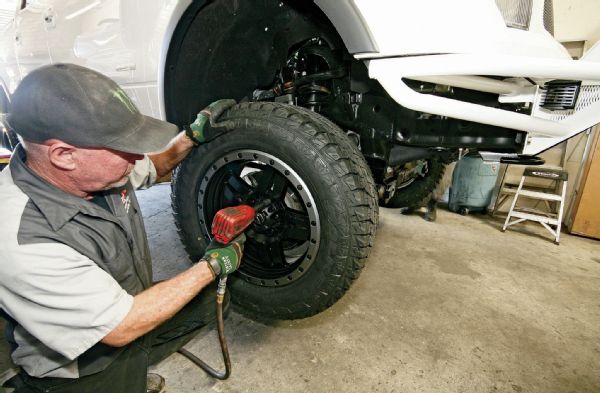
T&R mounted, balanced, and test-fit the 35-inch Falkens on Fuel Anzas. Pre-alignment, the Superlift kit and Falkens/Fuels raised the wheelwells 7 inches in the front and 33⁄4 in the rear.
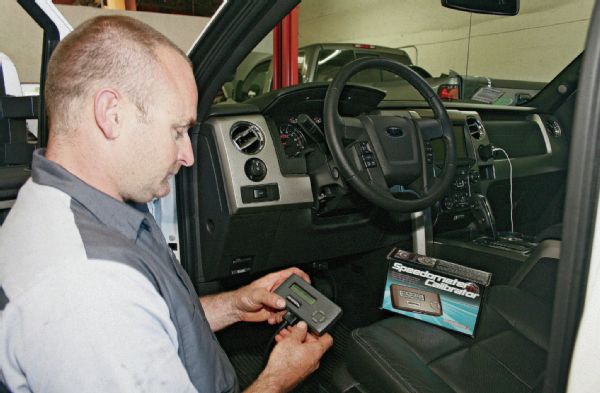
T&R recalibrated the speed signal for the larger tires with a Hypertech unit to restore an accurate speedometer reading and proper ABS/traction control operation. Then the truck went to the alignment shop.
FMVSS Testing
Shortly after the 2010 federal mandate that all ’14 passenger vehicles had to have an OE traction control system, Superlift and SEMA partnered on a testing/compliance program. Real-world testing for NHTSA’s FMVSS (Federal Motor Vehicle Safety Standard) 126—an evasive lane-change maneuver at highway speeds to verify that the traction/stability control system prevents a rollover—involves robotic telemetry and outriggers. This is the definitive test. It’s also expensive, with the cost ultimately being passed to the consumer.
As a more cost-effective alternative, Superlift and SEMA piloted testing with Clemson University’s ICar program (cuicar.com). Advanced computers were used to certify Superlift’s current-generation F-150 6-inch kit as FMVSS 126-compliant back in 2010.
Clemson’s testing process, known as Hardware in the Loop, is semi-virtual. The university plugs the computer simulator into the modified vehicle’s OBD-II port and CAN-BUS system. The lane-change maneuver is run with the vehicle on a fixture. Brake line pressures and modulations are noted by Clemson’s computer, which shows a virtual test on its monitor.
Clemson’s general conclusion is that the high-friction components—specifically tires and brake pads/shoes and rotors—have the greatest impact on the speed signals that feed the vehicle’s traction-control computer. Still, many of the larger aftermarket suspension manufacturers are conducting FMVSS 126-compliance testing, partly for marketing reasons and also for product liability purposes.
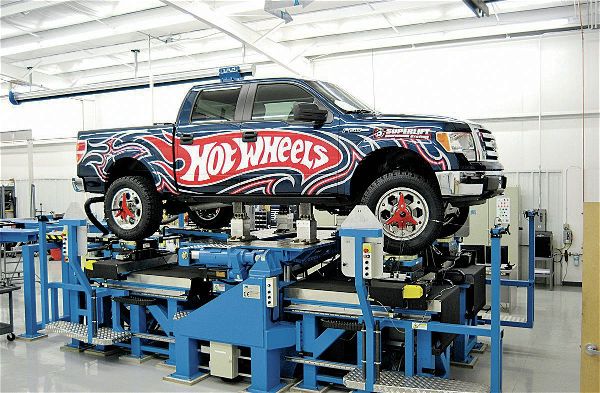 Clemson University’s Hardware in the Loop system simulates the FMVSS 126 test using advanced computers and a dynamic chassis fixture.
Clemson University’s Hardware in the Loop system simulates the FMVSS 126 test using advanced computers and a dynamic chassis fixture.